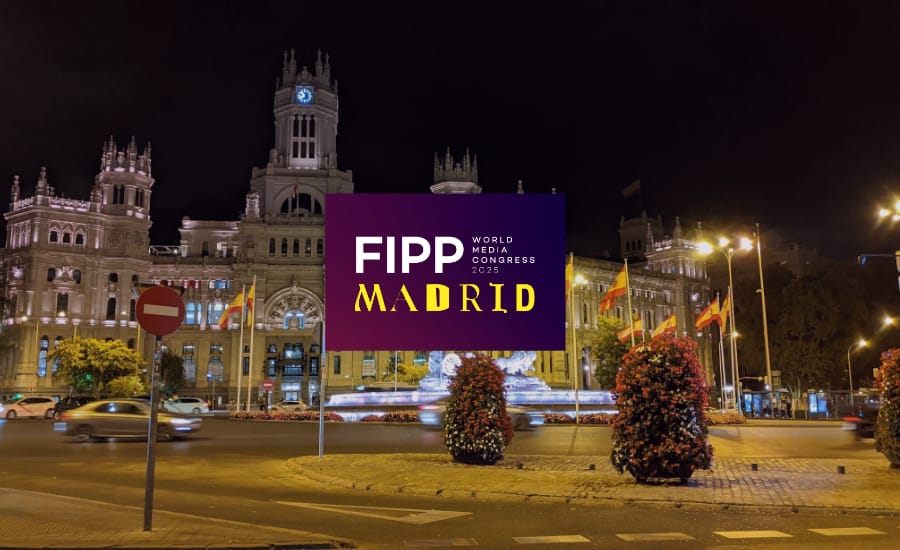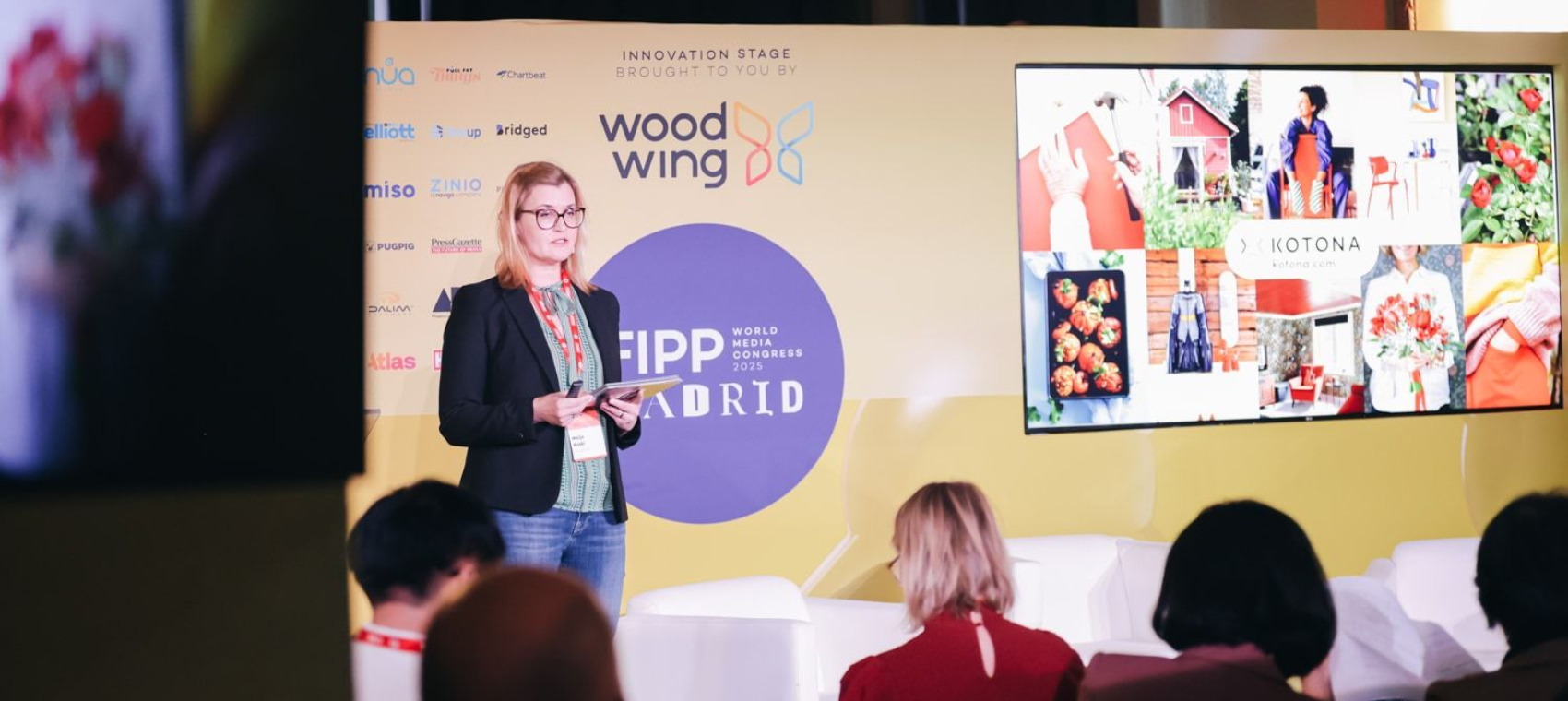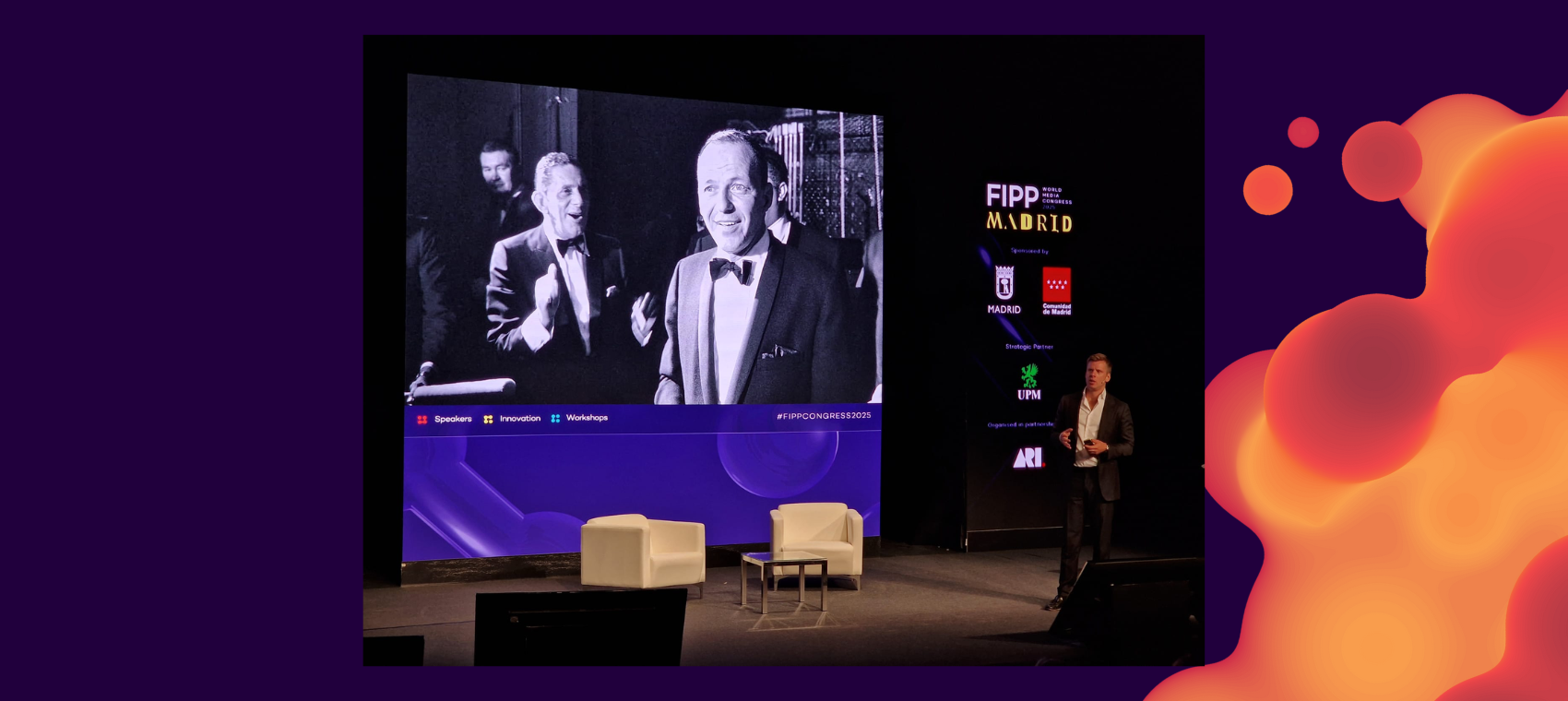- The Publisher Newsletter
- Posts
- “We should consider Google organic traffic in structural decline”: Highlights from FIPP Congress 2025’s second day
“We should consider Google organic traffic in structural decline”: Highlights from FIPP Congress 2025’s second day
Day 2 of FIPP Congress saw speakers emphasise their commitment to engagement and product, and preparing for a world with no Google traffic.
Welcome to The Publisher Newsletter, by Media Voices: your weekly newsletter profiling the people and products powering publishing.
A quick note that The Definitive AI Forum for Media, Information & Events, held on Nov 25th in London, is almost sold out. If you’re planning to get tickets, get a wriggle on!
“We should consider Google organic traffic in structural decline”: Highlights from FIPP Congress 2025’s second day
Last week saw over 500 professionals from publishing and media companies around the world gather in Madrid for FIPP Congress, celebrating 100 years of the membership association.
The first day saw speakers cover some common themes – see our Day 1 highlights. There was an emphasis on seizing opportunities quickly, innovating and investing, using AI to enhance not replace, and some paradoxical examples of the importance of brands, but also individuals.
The second day echoed these themes again, but also drew in some new ones. Here are a few worth highlighting:
Scale is out, engagement is in
No one will be surprised to hear that engagement was high on the list of priorities for publishers on the FIPP stage. Most speakers at least paid lip service to the idea that scale is no longer a stable goal. Engagement as a measure of success has become all the more important following a substantial industry shift towards memberships and subscriptions.
Rosie Percy, Newsletter Strategy Director at Hearst says that this focus, and the rewards of active users, keeps her disciplined when choosing what to send. “I always think anyone sending newsletters or contacting customers at any time, it’s a really privileged position to be in, especially when someone’s chosen and trusted to give you their data,” she said. “For me, that’s making sure that we’re delivering value at every single touch point.
“So if I’m sending you a newsletter, what’s the core value of that? Am I reminding you of the best content you might’ve missed this week? Or I’m delivering utility to you. For example, if you’re a Good Housekeeping reader and you just want some quick midweek meals, am I delivering that to you? Engagement is such a focus because a disengaged audience isn’t going to take any kind of action.”
In a later session, Joe Martin, VP of Media Licensing at Hearst outlined some of the other ways they’re building out their membership programmes. Their offerings range from the Cosmo Club which gives access to editors, sleepover events and brand discounts, to an exclusive Harper’s Bazaar Privé membership club which can cost upwards of £3,600 annually.
“As you’ve heard from other publishers as well, we are really doubling down on building direct relationships with readers, also with advertisers and really having a laser focus on engagement,” he said. “Different things work in different markets. The other thing we love about membership as well as building reliable recurring membership revenue streams is it also allows us to increase our gathering of first party data.”
Product with purpose
This renewed focus on engagement has shifted attention back to product and formats. The New York Times have the most paying subscribers of any publisher globally at nearly 12 million, so it’s of little surprise that they’re leading the way with investing and experimenting in new formats.
“We’ve always believed our journalism was worth paying for, but we knew that to succeed, our product had to become truly indispensable to millions more people, and we had to prove our value and earn the confidence of our audience in a digital space that’s been really saturated with a lot of noise,” VP of Product and Storytelling Jordan Vita told the FIPP Congress audience. She noted that consumers now expect information to be instantaneous and constantly updating, and will go wherever news is fastest.
“We’ve been working to transform our core news product from a single just monolithic feed to a much more dynamic destination for beat reporting, breaking news, opinion, culture, wellness and more. And it’s all with the goal of really deepening engagement, building more connections, and maximizing the value for our audience,” she said, sharing that NYT reporters can now file updates from the field within 11 seconds.
Laura Cushing, Product Director at Immediate Media emphasised that no matter how good the content is, it’s not of much use if it’s hard to find or the product experience falls down. “One of the things that I’m trying to infuse with [Immediate] is the fact of thinking about the whole experience,” she said. “Whether it’s a push notification that you get on your phone or whether it’s the print magazine, it’s that ecosystem that customers care about and it can take one bad experience, one paper cut, one friction point for them to not come back to that content.”
Cushing advised publishers to spend as much time with customers as possible, and integrating product and customer service teams. The more hands-on teams can get with experiencing and identifying pain points, the better products will come as a result, which in turn will reward publishers with more engagement and loyalty.
One of the most interesting product perspectives came from Srinivasan Balasubramanian, Managing Director at Vikatan Group, talking on a panel about media ecosystems. They have a very profitable events business with multiple awards and brand extensions, and even a personal finance community. But he thinks they would hold much less value without the magazines.
“The awards would never be what they are if there wasn’t the magazine brand behind it,” he said, explaining that each of their seven magazine brands have a related award. “That’s where I find it is linked and in many ways it’s also how we say in India, karma; you get it from the magazine and then you give it back to the magazine because the magazine cannot survive on its own. You need to make the money from the events to give it back to the magazine to have more awards that are coming in from the magazine.”
Prepare for a world with zero traffic
Following Day 1’s theme of practical ways publishers are using AI, Congress Day 2 looked head-on at the organic traffic challenge. There was acknowledgement that the future is still very uncertain and things will eventually even out. But because we have little idea when or what the overall impact will be, speakers were urging the audience to completely reduce their reliance on organic traffic for revenue.
““Google traffic may be stabilizing for some, but it remains precarious and I think we should consider organic Google traffic in structural decline until AI technology has reached full deployment and adoption,” David Buttle of DJB Strategies explained in a session on the future of audience discovery.
“Clearly that means we need to continue diversifying our traffic acquisition strategies. The effect of AI search is going to fall unevenly across different categories of content. So understanding what content within your corpus and within your output is highly vulnerable and what content creates resilience should be key.”
Hearst’s Joe Martin said that half of all article content on the internet is now AI, and highlighted some statistics to show that trust in content drops when it’s even perceived to have been written by AI. “That also flows through to advertising and purchase intent as well – purchase intent drops by 14% for ads that are placed next to something that people perceive to be generated by AI,” he said.
“The internet is awash with AI-generated content and finding some of the good stuff is harder than it’s ever been before. But we believe now that actually being a trusted brand that people know is more of an asset than ever before. And if you think for any reason that brands aren’t as relevant, there’s a number of real world examples where this proves that to be wrong and it’s shifting people’s behavior.”
Google’s Discover feature has provided some welcome traffic boosts. But some speakers warned about investing in it from a strategic perspective:
“[Discover] incentivizes the creative viral clickbait-y type of content of the type that consumers are unlikely to pay for, whether that’s with their data or with their cash,” Buttle said. “As a result, Discover traffic is ephemeral. You just click when something has caught the eye, but it’s that they’re unlikely to visit a second page or subscribe.
“We need to be approaching Google Discover with our eyes open. It’s a useful source of traffic, but it creates a strategic dependency which threatens us over the medium run.”
Buttle believes publishers should focus editorial resources and investment on content that will continue to attract users to owned and operated platforms in the future. “I think at a time when AI intermediation is profoundly threatening media business models, the strategic focus for almost all publishers should be creating direct paying relationships with loyal readers,” he emphasised.
A special podcast rounding up all the key highlights from FIPP Congress 2025 is now live. Follow ‘The Publisher Podcast’ wherever you listen to podcasts.








